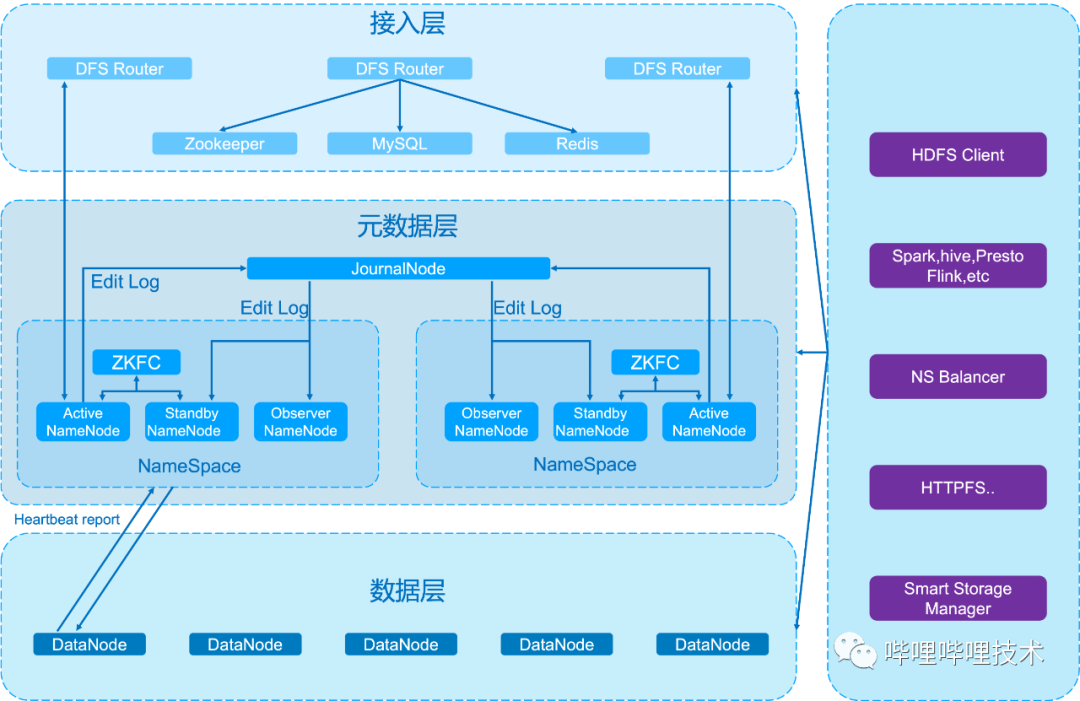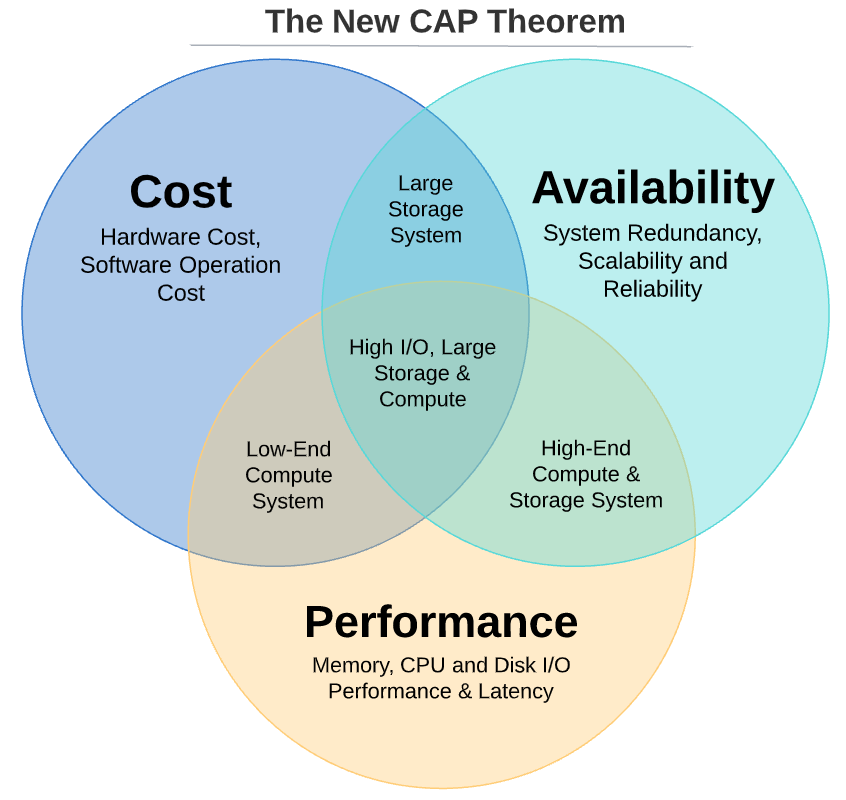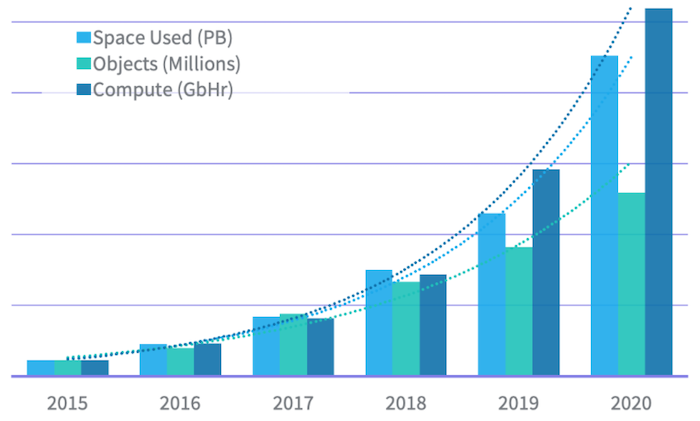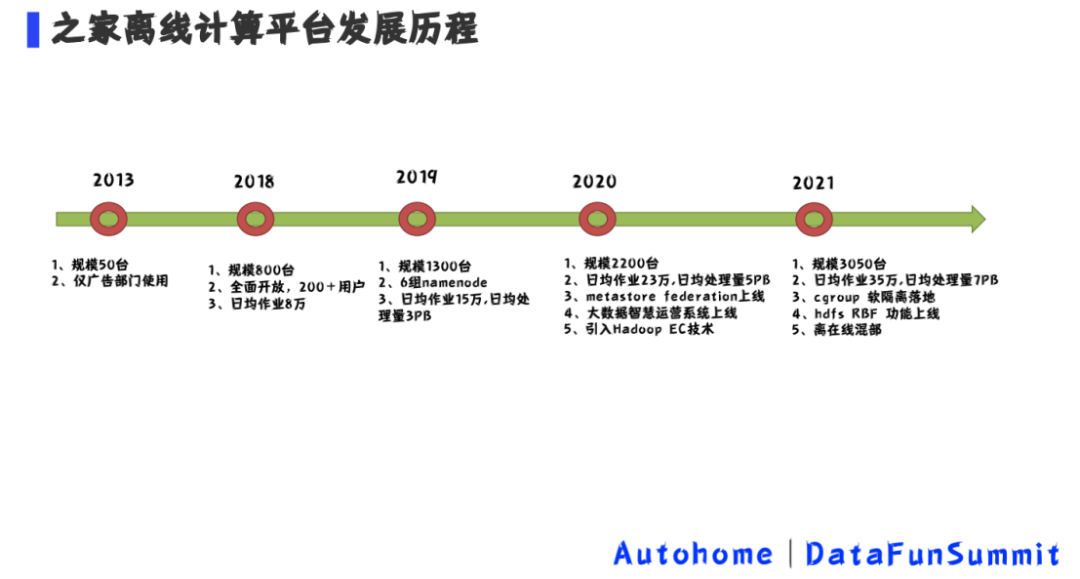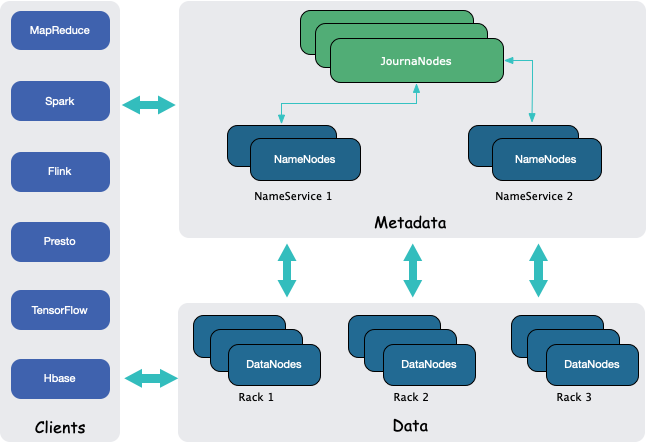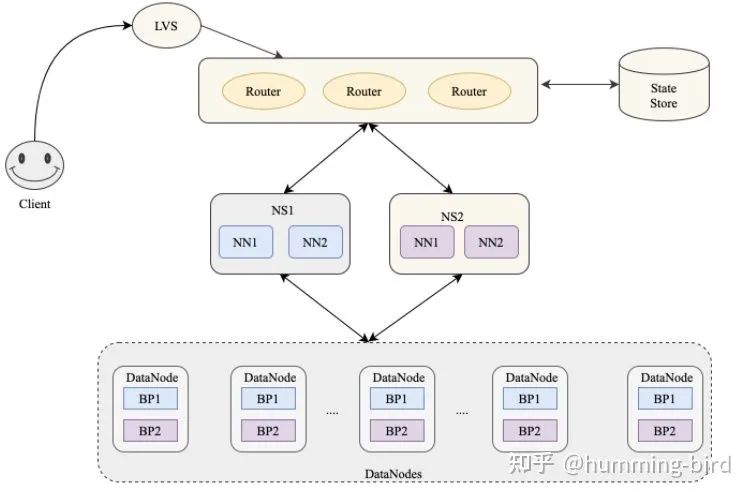文章目录
使用MapReduce解决任何问题之前,我们需要考虑如何设计。并不是任何时候都需要map和reduce job。
MapReduce设计模式(MapReduce Design Pattern)
整个MapReduce作业的阶段主要可以分为以下四种:
1、Input-Map-Reduce-Output
2、Input-Map-Output
3、Input-Multiple Maps-Reduce-Output
4、Input-Map-Combiner-Reduce-Output
下面我将一一介绍哪种场景使用哪种设计模式。
Input-Map-Reduce-Output
Input➜Map➜Reduce➜Output
如果我们需要做一些聚合操作(aggregation),我们就需要使用这种模式。
| 场景 | 计算各性别员工薪水平均值 |
|---|---|
| Map(Key, Value) | Key: Gender Value: Their Salary |
| Reduce | 对Gender进行Group by,并计算每种性别的总薪水 |
Input-Map-Output
Input➜Map➜Output
如果我们仅仅想改变输入数据的格式,这时候我们可以使用这种模式。
| 场景 | 对性别进行处理 |
|---|---|
| Map(Key, Value) | Key : Employee Id Value : Gender -> if Gender is Female/ F/ f/ 0 then converted to F else if Gender is Male/M/m/1 then convert to M |
Input-Multiple Maps-Reduce-Output
Input1➜Map1➘
Reduce➜Output
Input2➜Map2➚
在这种设计模式中,我们有两个输入文件,其文件的格式都不一样,
文件一的格式是性别作为名字的前缀,比如:Ms. Shital Katkar或Mr. Krishna Katkar
文件二的格式是性别的格式是固定的,但是其位置不固定,比如 Female/Male, 0/1, F/M
| 场景 | 对性别进行处理 |
|---|---|
| Map(Key, Value) | Map 1 (For input 1):我们需要将性别从名字中分割出来,然后根据前缀来确定性别,然后得到 (Gender,Salary)键值对; Map 2 (For input 2):这种情况程序编写比较直接,处理固定格式的性别,然后得到(Gender,Salary)键值对。 |
| Reduce | 对Gender进行Group by,并计算每种性别的总薪水 |
Input-Map-Combiner-Reduce-Output
Input➜Map➜Combiner➜Reduce➜Output
在MapReduce中,Combiner也被成为Reduce,其接收Map端的输出作为其输入,并且将输出的 key-value 键值对作为Reduce的输入。Combiner的使用目的是为了减少数据传入到Reduce的负载。
在MapReduce程序中,20%的工作是在Map阶段执行的,这个阶段也被成为数据的准备阶段,各阶段的工作是并行进行的。
80%的工作是在Reduce阶段执行的,这个阶段被成为计算阶段,其不是并行的。因此,次阶段一般要比Map阶段要满。为了节约时间,一些在Reduce阶段处理的工作可以在combiner阶段完成。
假设我们有5个部门(departments),我们需要计算个性别的总薪水。但是计算薪水的规则有点奇怪,比如某个性别的总薪水大于200k,那么这个性别的总薪水需要加上20k;如果某个性别的总薪水大于100k,那么这个性别的总薪水需要加上10k。如下:
Map阶段: Dept 1: Male<10,20,25,45,15,45,25,20>,Female <10,30,20,25,35> Dept 2: Male<15,30,40,25,45>,Female <20,35,25,35,40> Dept 3: Male<10,20,20,40>,Female <10,30,25,70> Dept 4: Male<45,25,20>,Female <30,20,25,35> Dept 5: Male<10,20>,Female <10,30,20,25,35> Combiner阶段: Dept 1:Male <250,20>,Female <120,10> Dept 2:Male <155,10>,Female <175,10> Dept 3:Male <90,00>,Female <135,10> Dept 4:Male <90,00>,Female <110,10> Dept 5:Male <30,00>,Female <130,10> Reduce阶段: Male< 250,20,155,10,90,90,30>,Female<120,10,175,10,135,10,110,10,130,10> Output: Male<645>,Female<720>
以上四种MapReduce模式只是最基本的,我们可以根据自己问题设计不一样的设计模式。
本文翻译自:https://dzone.com/articles/mapreduce-design-patterns
原创文章版权归过往记忆大数据(过往记忆)所有,未经许可不得转载。
本文链接: 【四种常见的MapReduce设计模式】(https://www.iteblog.com/archives/1797.html)



